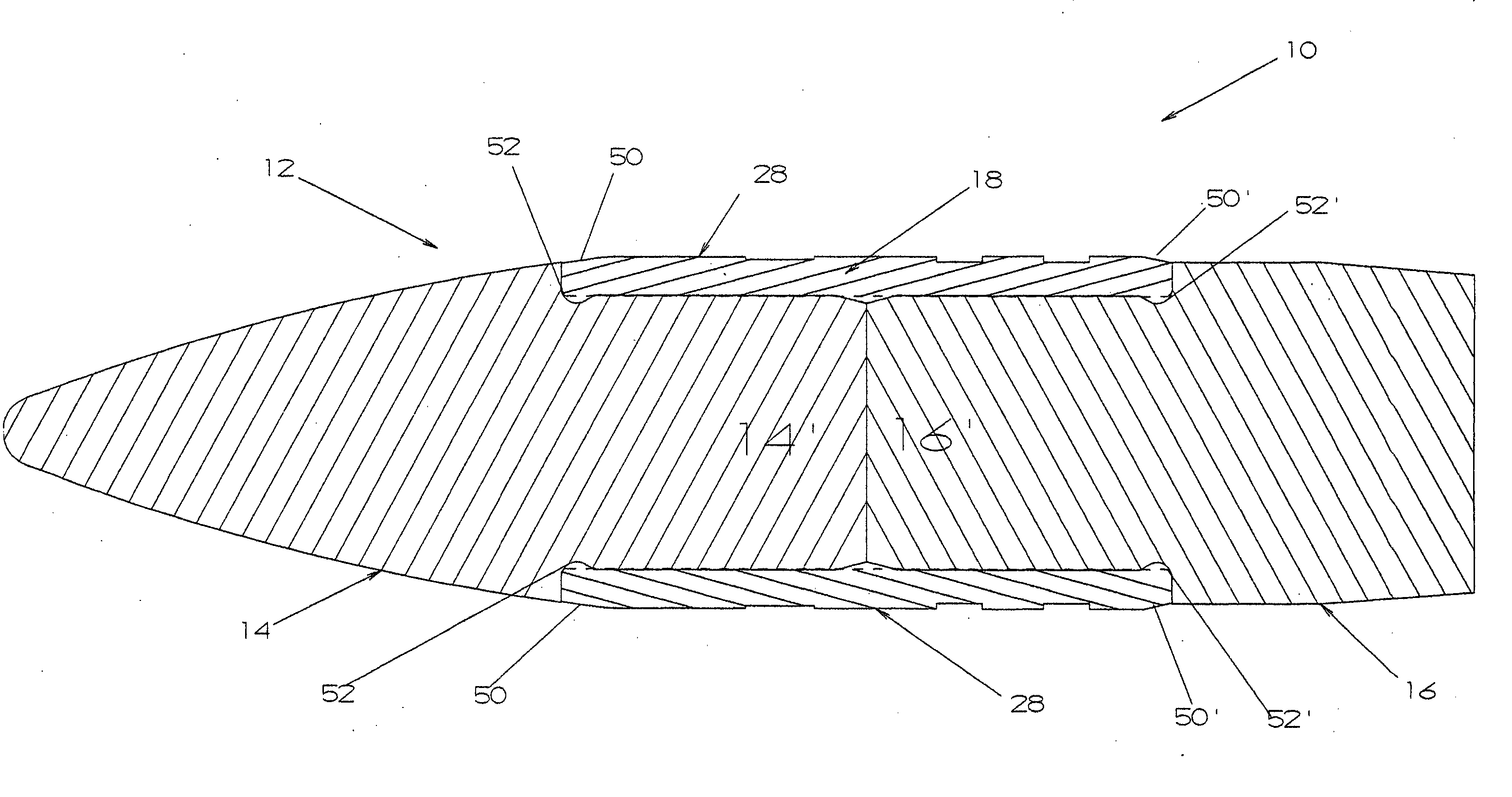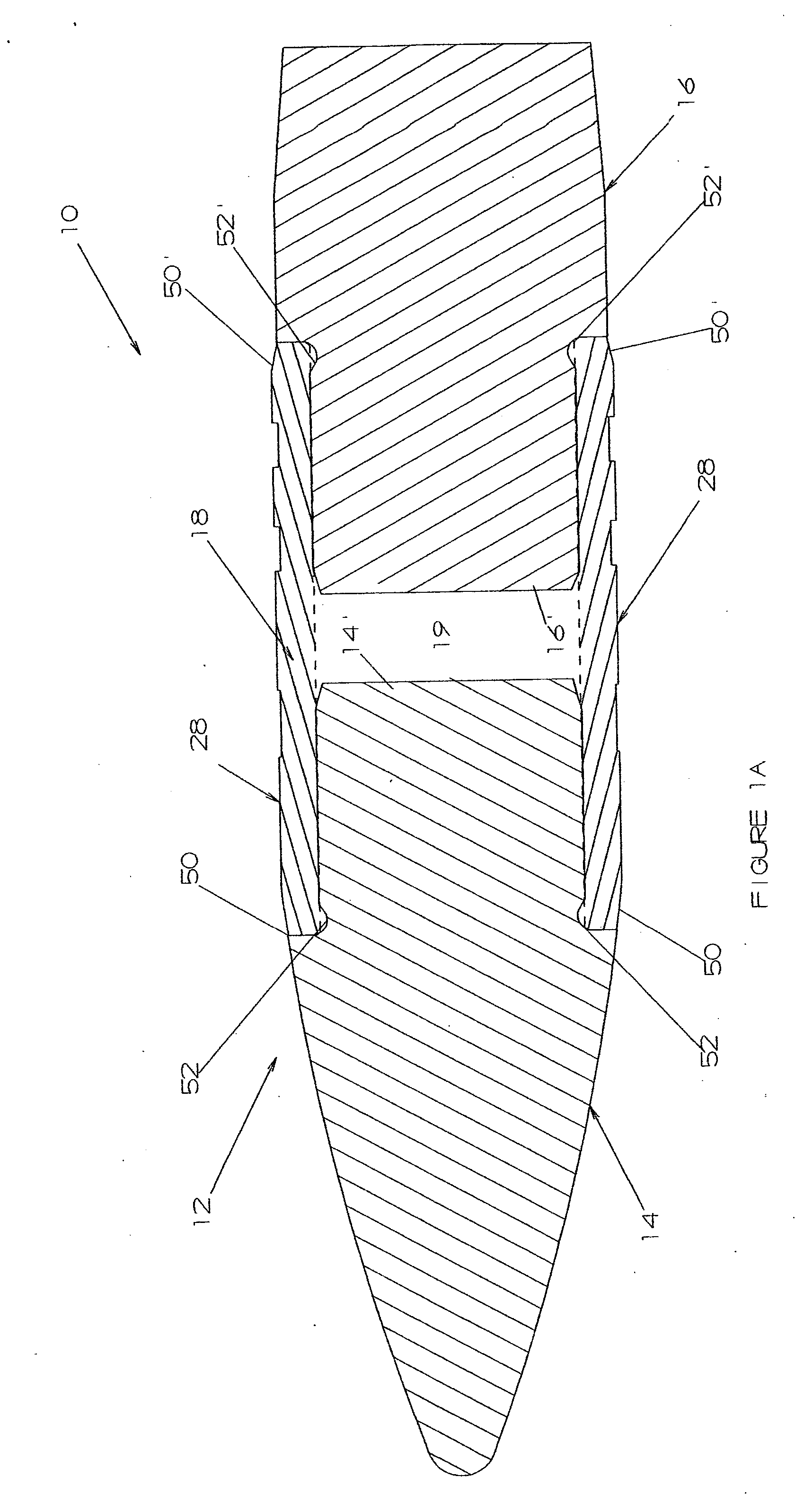Firearms projectile
a projectile and projectile technology, applied in the field of projectiles, can solve problems such as interface rupture, and achieve the effects of improving the performance of all small caliber weapons systems, reducing production costs, and reducing production costs
- Summary
- Abstract
- Description
- Claims
- Application Information
AI Technical Summary
Benefits of technology
Problems solved by technology
Method used
Image
Examples
Embodiment Construction
[0028] As shown in the accompanying Figures, the present invention is directed to a projectile generally indicated as 10 of the type structured to be fired from a firearm. More specifically, the projectile 10 includes a body, generally indicated as 12, which comprises a nose portion 14 and a tail portion 16 shown in detail in FIGS. 2, 3, 5, and 6 respectively. In addition, the projectile body 12 includes an interface 18, shown in detail in FIGS. 4 and 7, disposed intermediate the opposite ends of the projectile body 12 in interconnecting relation to the head portion 14 and the tail portion 16 as demonstrated in FIG. 1.
[0029] Structural features associated with one or more preferred embodiments of the projectile 10 include the nose and tail portions 14 and 16 respectively, formed of high density metal matrix composites, metals, alloys, or ceramics. More specifically, the nose and tail portions 14 and 16 can each be formed from a material which contains one or more of the following: ...
PUM
 Login to View More
Login to View More Abstract
Description
Claims
Application Information
 Login to View More
Login to View More - R&D
- Intellectual Property
- Life Sciences
- Materials
- Tech Scout
- Unparalleled Data Quality
- Higher Quality Content
- 60% Fewer Hallucinations
Browse by: Latest US Patents, China's latest patents, Technical Efficacy Thesaurus, Application Domain, Technology Topic, Popular Technical Reports.
© 2025 PatSnap. All rights reserved.Legal|Privacy policy|Modern Slavery Act Transparency Statement|Sitemap|About US| Contact US: help@patsnap.com



